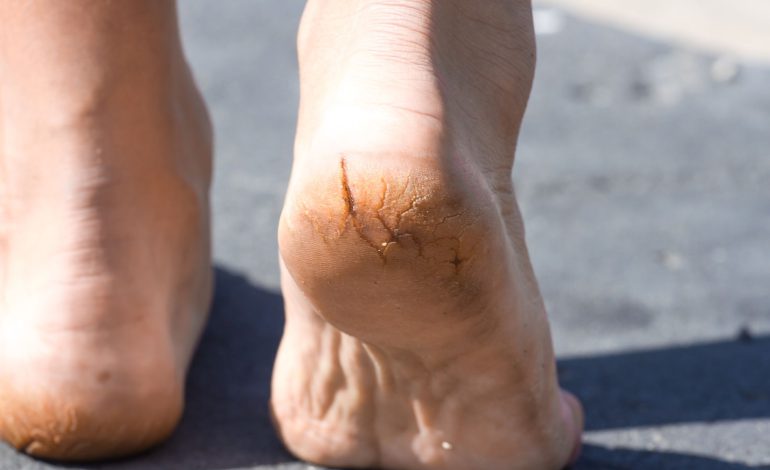7 ways to deal with cracked heels

We invest so much on our face giving little or no attention to our feet. The lack of proper care and hygiene thus causes cracked heels. For other people cracked heels aren’t an issue but in some instances, it can present a problem when your heels become painful or start bleeding.
Cracked feet also known as heel fissures are a common foot condition. Although it occurs in both adults and children, it is more common in women. Most people find cracked heels embarrassing and may even make them feel ashamed to remove shoes or socks in public. To learn how to treat cracked heels, it is important to know the causes.
Causes of cracked heels
· Having calluses-a callus is a section of the skin that has become toughened and thick because of friction, pressure or irritation.
· Obesity which increases pressure on the feet
· Frequently wearing shoes or sandals with open backs
· Having conditions like athletes’ foot, eczema
· Using soaps that strip your skin of the natural oils
· Taking long hot showers
· Dry skin due to climatic conditions
Remedies for cracked heels
1. Hydrate
If you are experiencing cracked heels the first thing you need to check out is your water intake. The skin can lose up to a litre throughout the day especially in dry climates. Keeping your skin hydrated soothes dry skin and goes a long way in preventing cracked heels.
2. Apply moisturizer consistently
Use a good moisturizer at least once a day or possibly more. If you are trying to heal cracked heels or prevent them, moisturizing ensures that they don’t go dry. A good moisturizer or barrier cream minimizes fluid loss from your skin and attracts more from the underlying tissues. Consistency in the use of these products is key and yields more results.
3. Use cotton socks
Socks made from cotton fabric help the skin to breath and keep the moisture in. Wear your socks after moisturizing your feet frequently to get smooth and soft heels.
4. Scrubbing the heels with a pumice stone
Gently scrub the heels with a pumice stone, after moisturizing or soaking the feet in warm water.
Remember to always disinfect the pumice stone before use to kill the bacteria from previous scrubs. People with diabetes or neuropathy should avoid scrubbing their feet since this could create a wound and increase the risk of infection.
5. Home remedies
This may come as a surprise, but your kitchen not only serves your stomach needs, but also comes in handy when dealing with cracked heels.
· Vegetable oil for example contains emollient properties along with antimicrobial, antioxidant, anti-inflammatory and wound healing properties. These act as nutritional building blocks for a healthy skin hence treating cracked heels. Wash your feet and dry them with a towel, then apply a layer of vegetable oil on the affected area.
· The famous banana and avocado foot mask is also known to heel cracked heels. Blend a ripe banana and half an avocado. Apply the creamy paste over your heels and feet. Wait for 15 minutes and then wash with lukewarm water.
· Honey is a natural antiseptic that helps heal cracked feet. The soothing properties of honey makes it a good remedy for cracked feet.
· Olive oil has nourishing properties that make your skin soft and supple
6. Wear closed-back shoes
Shoes and sandals with open backs can cause cracked heels or even make them worse. They dry out feet by making them lose their moisture and actually don’t provide enough heel support hence straining your feet. For the high heel lovers, shoes with tall, skinny heels may cause your feet to expand side ways leading to dry feet.Furthermore, avoid shoes that are too tight since these limits the blood flow in your feet.
7. Medical assistance
Seek medical attention when the cracks become painful causing trouble when walking or when they begin to bleed. A podiatrist or foot doctor will help in removing the hard skin and prescribing medicines or lifestyle that can help heel and prevent future cracked heels.




